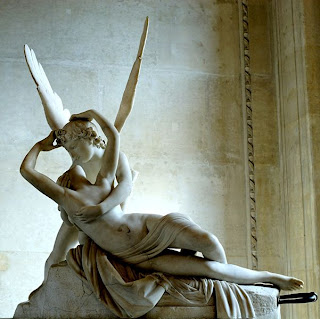
At the recent unveiling of the Red Bull RB7, Adrian Newey was moved to protest that, "I've got a reasonable ability to visualise things but I can't see the invisible airflow!" (
Autosport February 3, p17).
But what exactly could have provoked Adrian to make such a 'Clark Kent denies he is Superman' comment? Well, in his MPH column in
Autosport on September 3 last year, Mark Hughes reported that "They say he can visualise what the air wants to do, the way Keith Duckworth used to be able to sense the gas flow in a combustion chamber." Riffing on this theme, McCabism asserted on November 6 that
"Adrian Newey, they say, can see the air." And barely ten days later,
Richard Williams, writing in The Guardian, claimed that "What they say about him is that while he contemplates the shape of his next car, he can visualise the air flowing around it. In his mind he sees the invisible waves and currents, the areas of low and high pressure. Then he can start thinking about how to shape it." As Adrian now helpfully points out, he can't
literally see the air, he can only visualise it!
Anyhow, Richard Williams then proceeded to draw the following sculptural comparison:
"That makes me think of someone like Antonio Canova, sitting in his Rome studio, studying a block of marble just arrived from the quarries at Carrara, then walking around the room to examine it from every angle and, as he does so, seeing within its rough form the outline of Psyche Revived by Love's Kiss, which you can see, two centuries later, in the Louvre. Some people have that kind of special vision, and Newey seems to be one of them." It's an interesting analogy, and there are certainly parallels here. Newey does indeed share with artists such as Canova a power of vision, in the sense of an ability to vividly conceptualise a future article which transcends contemporary articles of comparable type. However, it's important not to characterise genius as some sort of inexplicable,
ex nihilo expression of creative power, for this is psychologically unrealistic, and a mysticalisation of such talent. Sculptors do not carve great works of art from blocks of marble, and Formula 1 designers do not create beautiful and innovative cars, without a great deal of prior learning, experimentation, analysis and correction.
In fact, John Smythe Memes furnishes an account of Canova's creative process which testifies to this, and suggests further analogies with the design of racing cars:
"Canova naturally possessed an imagination of great energy...But over the rich treasures this poured forth, the judgement presided in severe scrutiny: in correcting he was therefore slow and fastidious. First ideas were hastily thrown upon paper in slight outlines which were often changed and retouched, so that finally little of the original design remained; yet each successive alteration evidently appears an improvement...Having at length satisfied himself with the design of any projected work, as it would appear in painting, his next care was to examine and recompose it, according to the principles of sculpture. The modelling tool was now substituted for the port-crayon, and the sketch transferred to wax or clay. In this first or smaller model, the composition was carefully studied in the arrangement of the individual parts, and in the general effect, every thing being determined with just precision. In this condition, with the masters anterior to Canova, it had served as the only guide in forming the statue. With the latter, these were merely preliminary steps conducting to the full perfection of the real model, which was composed of exactly the same dimensions as the future marble...
The Sculptor having thus effected the completion of a model,...the manual labour of the marble was safely and profitably confided to inferior powers. But, when its last superficies was to be formed-when all that finally meets the eye was to be created, the inspiring touches were trusted to the master hand alone." (
Memoirs of Antonio Canova, p555-557).
Thus, Canova began by testing out his ideas in sketches, constantly refining and correcting them, before making a small-scale model of the intended sculpture, (rather like a wind-tunnel model of a Formula 1 car). Unlike his predecessors, Canova then made a full-scale model, and presumably subjected that to further scrutiny and alteration, before finally ordering a bunch of artisans to hack away at a block of marble, to which he could make the finishing touches.
There is, then, a methodology at work here, and rather more to it than simply plucking an idea from some sort of ambient inspiration field, and immediately carving its realisation out of a solid block of marble! This, of course, is not to diminish Canova's genius, but, to be fully appreciated, creative talent such as his or Newey's should be understood as the by-product of a lifelong process of dedication, learning, analysis and self-correction.











